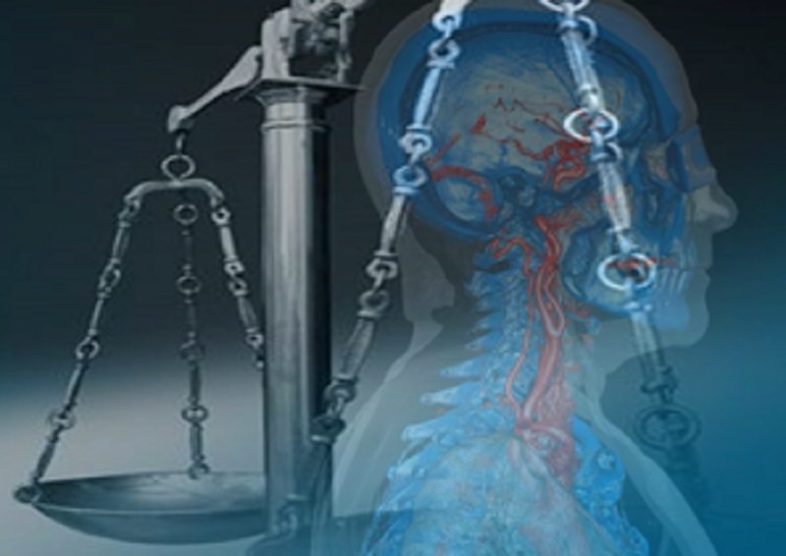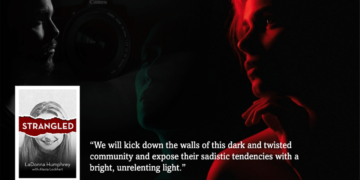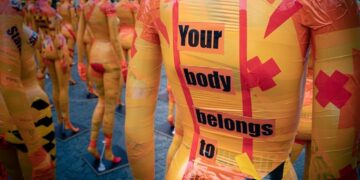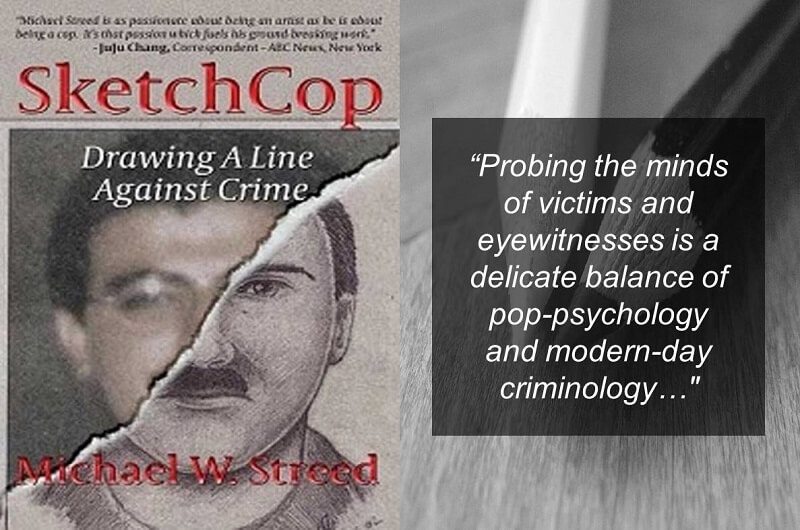When a criminal offense takes place and the offender escapes, eyewitnesses can be the vital component in catching them. Some witnesses may have been bystanders who saw events unfold from a distance. Others may have been a direct victim of the crime, they may have suffered injuries and been left traumatized by what has happened to them. A police sketch artist can be the key individual to gently unlock memories, recreating the face of an offender from the recall and perception of the one person who saw them up close.
The accurate drawing of a suspect is not an artistic piece of work created for aesthetic purposes like a standard portrait drawing would be. It is about capturing the key features of a suspect and depicting them as accurately as possible. A witness needs to trust the police sketch artist they are working with as, without this foundation, the relationship that needs to develop between sketch artist and eyewitness just will not happen.
SketchCop – Drawing A Line Against Crime by a former police officer and now full-time forensic sketch artist Michael Streed includes a collection of cases he has worked on during his career. What is pleasing is the detail and full case history which you can follow from start to finish. The crime itself, the witnesses, the police investigation, Streed’s work on the case, and the overall outcome.
Michael Streed highlights that while some of his sketches have played a vital role in the apprehension of a criminal, some haven’t and his work is one part of a much larger process of criminal investigation. Through these case examples, you learn of the different types of crime and witnesses that police sketch artists can be involved in alongside the unique challenges each case presents.
Michael Streed does not simply tell of his success stories, he tells of cases across the spectrum. Ones where the offender was caught quickly, ones where the wrong offender was caught and ones where no offender was caught at all.
Chapters which tell of these criminal cases are weaved in amongst others which go into the more technical side of the forensic artwork. I felt like I was learning secrets while reading this book. I, as I’m sure many others, have always been curious and fascinated by the work of police sketch artists.
It is one thing to draw an accurate representation of a person’s face from a photo reference or a model in a studio, but to create such an image entirely from another person’s memory and perception is quite remarkable.
Michael Streed is clearly used to the question of “How do you do that?” but feels there is no mystery; the key to success is, in fact, the witness interview. “People are fascinated and believe the process is a closely guarded secret cloaked in mystery,” he says, “First of all, there’s no mystery at all. The successful conclusion of a case begins and ends with the interview”.
Faces are all individual. Aside from identical twins we all, every one of us, have an entirely unique face. Our noses are all slightly different shapes, nostrils wider or narrower, bridges more predominant or barely there at all. Our eyes, what some call the ‘windows to the soul’ have expression and emotion as well as shape and form. All of these are features which have the potential to be captured in a sketch and could be the features which lead to recognition.
“The secret lies in my ability to merge the details of a victim’s memory with the lines and shadows that I lay down on paper. And while it might seem odd that something so powerful could come from nothing more than a few recollections and well-placed scribbles, it’s a formula that’s helped bring many criminals to justice.”
The complexity of working with witnesses who may be traumatized by their experience was also revealed. Skills in communication, keeping a person relaxed and calm while reassuring them through a very difficult and emotional process are clearly required.
An understanding of the psychology of memory, how we as individuals encode and retrieve information and how as a police sketch artist to access that information, appears to be the foundation for this work. For Michael Streed his experience and training as a police cop have provided him with a deeper understanding of the process of criminal investigation, working with witnesses and in the kinds of barriers he may face.
Could you on return from your local supermarket, accurately describe the face of the check-out assistant? What if during that trip, there was a robbery, your 20 minutes inside that usually quiet and familiar environment turned into a period of fear and terror followed by questions and statements that needed to be answered and given. How good is your mental image of the check-out assistant now?
In many cases, of course, the person who is the cause of that terror is the face you are being asked to remember and the one you may be more likely to remember. Equally, that person may just become a blurred image, as your brain tries to protect you from memories that are painful and uncomfortable.
“I could see the victim staring wide-eyed at me. In her eyes, I saw a jumble of both fear and hope. Fear from the terror she experienced with hope that she would be able to hold the frightening image of her attacker in her mind’s eye for just a moment longer.”
Michael Streed aims to provide a comfortable and relaxed environment, gently encouraging a witness to recall the details he needs to create an accurate sketch. All the while trying to give them ownership of the process, a feeling that they are in control and that they are positively dealing with what has happened to them. “For me, it’s about helping victims. It always has been and always will be” he says.
These are all aspects of the work of a police sketch artist I was entirely unfamiliar with and highlight the multiple skills required alongside artistic talent. Computer generated photofits are also discussed in SketchCop and while many forensic artists are disapproving of this technology, raising concerns over its accuracy and computerized impersonal approach, Michael Streed’s focus is on the achieving the best outcome for a witness and for solving a case. Where a forensic artist is not available, which is often the case; computer software can be the next best thing when a suspect image is needed.
Michael Streed has addressed the concerns of many forensic artists by developing his own software and customized training program (SketchCop Facette) which refocuses attention back where he thinks it is most important; the witness interview. His training drills down into the important aspects of such an interview.
Whether an image is being created by hand or by computer software, obtaining accurate and useful information from a witness is the foundation for this process. Michael Streed discusses using known psychological techniques such as cognitive interviews, ensuring the witness is not being led in their descriptions of a suspect and using techniques to aid memory and recall.
Michael Streed writes in an engaging and flowing manner making this book easy and enjoyable to read. Each page contains more information, a new insight, a new case study and detail that keeps your interest and attention. When discussing cases he has worked on, many include his police sketches alongside a photo of the perpetrator, bringing to life his discussions and allowing you to look more closely at the police sketch, the similarities, and differences to the photo of the suspect.
In doing so you realize just how complex this process is. The name ‘SketchCop’ for Michael Streed is very fitting. It is clear how his police experience has been used and merged with his artistic talent.
“Probing the minds of victims and eyewitnesses is a delicate balance of pop-psychology and modern-day criminology….if not handled properly, a botched interview also can foster an atmosphere of mistrust and risk further trauma to your victim.”
This was a difficult book to put down. You quickly become fully engrossed in the authors narrative and in this case, the author’s story. This was not a dry textbook which provides tips and techniques for how to be a police sketch artist. It is a story, a documentation of how Michael Streed, a police officer for many years with an interest and a talent in art, began to use these skills and became a very successful police sketch artist.
One the same hand it is an inspiring story, revealing the inner workings and sensitive nature of police sketch work which will, I’m sure, be very interesting and enlightening for anyone thinking of pursuing this line of work themselves. An excellent book which I thoroughly enjoyed reading and one I would definitely recommend to those curious about this aspect of criminal investigation.
You can purchase a copy of SketchCop by Michael Streed at Amazon.
[wp-review id=”3744″]Unlimited reading on any device, try Kindle Unlimited from Amazon for free
Prefer Audiobooks? Audible 30-Day Free Trial with free audiobooks















































bookmarked!!, I like your blog!
Hi Kiersten, that’s great, glad you are enjoying it!
Thank’s great post.